This post covers the top 3D design software programs that service firms and freelance 3D modelers utilize. A workman is only as good as his tools, according to an old adage. If you are using outdated or inadequate tools, you will have a difficult time completing a job properly. This is just as true for a carpenter or chef as it is for a 3D modeling designer or freelance drafter. There are two factors to being a good designer: experience and the right tools. Without appropriate tools, you’re working decades behind the rest of the industry. You may as well be working with a pencil and some graph paper for all you might accomplish.
Without an appropriate toolbox of options to complete your projects, you’re hamstringing your efforts and preventing yourself from accomplishing all that you can. Whether you’re a freelance CAD designer or you’re looking to hire one, finding the right software to use is vital to doing a good job. Every program you find has different levels of price and experience required, and there are additional benefits and add-ons that can improve the functionality of these programs. So, what is inside a good designer’s tool chest? Let’s take a look at 20 of the most commonly used programs for designers and drafters.
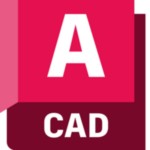
AutoCAD
AutoCAD is an industry-standard and has been used for decades with great success. Autodesk and its various functions and additions have become a benchmark for what a good 3D design software looks like. AutoCAD has its drawbacks though. Namely, a relatively high price tag (in the $1,000–$2,000 range) and its complexity, which requires a good deal of practice to master. It can take a while to become a legitimately good freelance AutoCAD designer, although the basic functions (layouts, floorplans, and similar designs) are fairly straightforward.
When used properly though, it can be a very dynamic tool, creating stunning visual displays and extremely powerful schematics. AutoCAD has been used by industry professionals for decades and is one of the oldest and longest continually used software suites in the designer’s toolbox. Fortunately, because of its age and the fact that it is one of the fundamental design programs, there are many people who have been willing to learn and teach its intricacies and have become very skilled AutoCAD designers.
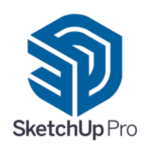
SketchUp
SketchUp is an up-and-coming free tool that 3D product modeling services can use to sketch designs and practice their craft. The basic product, SketchUp, is free to use with absolutely no strings attached. You can build your designs in the virtual world (SketchUp free is an online-only platform), taking them with you wherever and creating impressive designs without any investment. The obvious drawback is that it’s not nearly as robust as other programs.
There are definitely limitations to the things you can do and create within the free version of SketchUp, but that doesn’t mean it has no value. In fact, for a free software, it has an impressive array of options for your use. Rendering and some more complex modeling is out of the question, but designing 3D structures, floor plans, and diagrams are well within the purview of SketchUp free. Better yet, there are affordable upgrades that allow you to add on some of the more dynamic functions, allowing you to step your project up quickly from a simple diagram to a work of art in the design world.

Marvelous Designer
Marvelous Designer is pretty well defined within its own name. This is a program that is focused much more on aesthetic design and photorealism. It is well known for being adept at creating fur, fabrics, and clothing with incredible detail and accuracy and has been commonly used in numerous big blockbuster films. While this program may not be the most useful for architecture or site planning, it has obvious benefits for the freelance 3D product demo service, especially if they’re looking for something to really help their photorealistic renderings come to life in vivid detail.
It is surprisingly affordable, with multiple options for purchasing, including annual subscriptions and indefinite subscriptions. This makes it a great addition to the designer’s toolbox. However, due to its limitations, it’s still more of an accessory than a necessity. Designers will frequently call upon the help of Marvelous Designer or a similar program for designing furniture, clothing, or other aspects of interior design. Depending on your needs for a design or a product idea, you may be very interested in the benefits of Marvelous Designer, but not everyone needs it. As it stands, however, it is extremely useful for the things that it does do, even if it isn’t the broadest in scope.
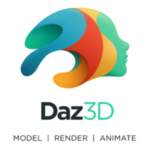
DAZ Studio
DAZ Studio is a free 3D modeling platform, which makes it an excellent option for consumer product design services. DAZ Studio is actually incredibly powerful and useful for a free platform. While SketchUp, which has free options, is primarily used for architecture and structures, DAZ is much more geared towards rendering, animation, and the like. With a wealth of free options for your customization or creation, DAZ Studio has the ability to create some very impressive designs that look and feel exceptionally lifelike.
You can integrate real-life pictures and images so that you can tweak and adjust them to add levels of detail, animation, and rendering to their image, or you can use their stored database of designs to create images from scratch. This system is exceptionally useful—especially as a free resource—for photorealistic rendering and is certainly a great place to start when trying to learn.
There are always going to be functions that expensive software offers which is limited with programs like DAZ, but it’s hard to argue with the opportunity to have free, dynamic software for rendering that requires no royalties or additional fees, especially if you’re just starting on your rendering design journey.
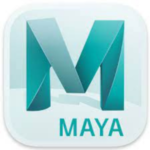
Maya
Maya is another offering of AutoDesk, the creator of AutoCAD and the mother of most 3D design software on the market today. Maya is one of the most complex and all-encompassing offerings for 3D design on the market, simply because AutoDesk is the groundbreaker and leader in innovation for this market. Maya incorporates detailed physics-based environments so that you can truly manipulate, create, and test your works of 3D to see if they are realistic.
Even more exciting, Maya modeling freelancers can tweak and adjust the physical environment to test them in virtual worlds, such as if you wanted to create a design that would be used in space or on Jupiter, where there are different forces at work. Maya has its drawbacks, obviously. Being this robust software comes with an obvious price. First and foremost, the actual price. There is a free version for non-commercial use, but the price increases to nearly $1,000 if you want a commercial license. There are other additions that you can incorporate as well. Additionally, complexity is an issue for beginners. While this program can do quite a bit, it takes some great skill to use it properly.
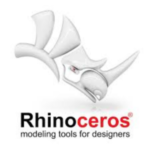
Rhinoceros 3D
Rhinoceros is something of a catch-all program. This is a versatile, bare-bones design for the architect or civil engineering service in your life who is more comfortable working with grids and numbers than textures and environments because this program is very stripped down. Doing so, however, allows it to be more versatile and fluid because it was designed to take on a lot of tasks. Jack of all trades, but a master of none, this program is capable of CAD, CAM, 3D printing, graphic design, architecture planning, and more.
However, it has fewer offerings for each of its different fields of work than a specified program would. It’s very useful if you want to jump between different design styles, or if you want to translate your work with 3D printing into a 3D model, but it won’t create the sleekest product compared to other programs. Additionally, it will still run nearly $2,000 for a license and it has a slower workflow than dedicated programs. The designers succeeded in packing a lot of variable functionality into the program, but in doing so, it sacrifices a great deal of the detail work that helps make the other programs successful.
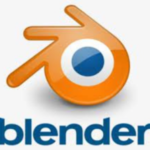
Blender
Another free program, Blender is a great open-source platform that allows you to do quite a bit in the animation and rendering department. Blender is very useful when it comes to texturing and layered visual effects. It’s another one of those versatile programs like Rhinoceros 3D, but this one sticks within the rendering realm. Blender has all the tools needed to sculpt, skin, and texture any design or image you choose. It has been used extensively for animated films, various apps, and even some video games, which is an impressive resume for a free program in such a highly-detailed field.
One of the interesting things about Blender is that it is an open-source platform, which means that its users can have input into its design. If you’re a Blender 3D modeling expert with programming or know how to adapt a piece of software this complex, you can tinker with it and make it unique. If you make some changes that will be useful for other users, you can even send them back to the main program, and they will be incorporated. These types of programs are great for adapting to your own personal style of use and allow you to customize the work you do in the way you want.
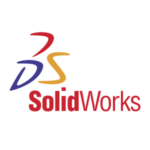
SolidWorks
SolidWorks is another stalwart mainstay program used by engineers and SolidWorks freelancers alike. This program is known for its use as a product design tool, as it allows you to easily and quickly create products and infinitely complex designs and transfer them to the 3D world. For many, SolidWorks is an introductory lesson into the world of 3D design and animation. It is complex enough that it allows the user to interface with every aspect of 3D modeling and design, but simple enough to be useful for a beginner.
This program has all the tools you could want to start out in the world of product design. You can create any number of different types of products, engraving and texturing them as you wish. You will learn how to merge multiple intricate pieces to create a complex part with SolidWorks, and you can even run tests and simulations within the program. Modeling will simulate heat transfer, density, and different materials for you to test your product. Another useful feature of this program is that it’s compatible with most 3D printers on the market and is one of the standard programs for the rapid prototyping industry.

3ds Max
You can’t get very far without running into another AutoDesk program, and this is one of them. 3ds Max is a more artistic program built on the architectural foundation established by AutoCAD and its brethren. This software will cost a pretty penny—it runs near $2,500 annually for a subscription, so it is certainly for commercial and industrial use, but the benefits are clear.
This program is designed for the artistic side of visualization, rendering, and design, and it is commonly used by video game designers, interior design services, and 3D artists to create renderings and drawings that are stunningly realistic. This program is rife with special effects and will allow you to manipulate lighting, textures, and movement of materials in a far more detailed way than any other program on the market. This program is a master class in 3D design and it certainly requires some expertise to use properly, but it is well worth the cost and effort when the design is finished. The work involved with this program is extensive, but it is incredibly powerful.

ZBrush
ZBrush is a departure from the standard forms of 3D rendering and design. This is a fairly standard priced product, running near $1,000 for a license, but it works differently than other programs. Most design suites rely on a polygon foundation that is stretched, rotated, or shaped into the beginnings of your product or design. It requires a more conceptual idea of the product, typically. ZBrush is a bit more intuitive, at least in terms of how the design is manufactured.
Silhouettes and shapes are designed and molded, essentially allowing you to start with one face of a product and texture it, design it, or augment it however you want. Then, you will build it up piece by piece in whatever the most common-sense way is to you. You can extrude or stretch the designs, or you can build other silhouettes and faces to craft the design from the outside in. This program is very useful for creating the design of a product without worrying as much about the underlying structure. It’s also used by 3D character modeling services. That can always be filled in later, but to start, it gives you a good view of the product in a straightforward manner.
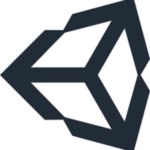
Unity
Unity is a 3D design software that is made for the gaming industry. This program is designed by freelance 3D animation services that seem lifelike and moveable. Unity is well-designed to support both 2D and 3D animation so that you can create landscapes, simple designs and features, and more intricate characters and features within a game or video design. Interestingly, the program has also found a high level of success in the world of automotive manufacturing and engineering/construction design.
The ability to create lifelike images that are fluid and can show movement well is incredibly useful and translates easily to other platforms without move effort. Unity is designed to be user-friendly, and you can start off the bat to create simplistic games and designs. As you get deeper, the features improve, and you can add on more powerful benefits to create some incredibly unique and robust designs that will leave your clients breathless. It is compatible with a number of different hardware systems both for gaming and for manufacturing and automation, which makes this program extremely useful in the business world.
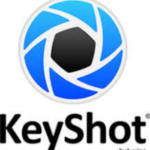
KeyShot
KeyShot is the standard for renderings. This software is designed specifically to help with replicating and improving files, so they are either converted to 3D renderings or augmented to create lifelike visuals. The program is built on a high processing speed that allows for real-time ray tracing, which greatly impacts the visualization capability of these programs. Freelance real-time ray-tracing services provide the ability of a program to follow the movement and trace the paths of light as it is simulated.
This makes lighting, reflections, and shadows much more realistic and helping with textures and colorization. KeyShot is one of the best programs with this feature, and it can allow you to create designs that are much more lifelike and full of motion and color. This software is great for creating product visualizations that are supposed to be in the real world, and it allows you to bring in files of real pictures to adjust or compare.
At a relatively standard price—around $1,000 for a typical license—it is very user-friendly with a wide range of functionality. This is an excellent software for creating real-world renders, especially for showing off products or moving designs.
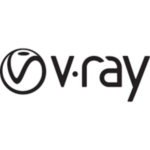
V-Ray
V-Ray is not a standalone program. This is a plug-in that works with Maya, 3ds, and other software programs to enhance their rendering and design capabilities. V-Ray incorporates a lot of the beneficial design features from other software programs that we’ve discussed on here and makes them available in more robust standalone suites.
Compatible with Maya, it takes an already powerful system and incorporates new presets, higher workflow capacity, speedier renders, and even real-time ray-tracing, which can help make your visual designs more realistic. Essentially, V-Ray takes the best aspects of rendering and photorealistic design software and lets 3D architectural visualization services thrive with them.
There are numerous benefits to this. Just like with Rhinoceros, it is beneficial to have a jack-of-all-trades sort of program that allows you to maneuver between different functionalities or transition your product design from a 3D printable piece to a photorealistic rendering of what it will look like in the real world. V-Ray allows you to take your in situ program options (from powerful AutoDesk products or SolidWorks) and incorporate the other aspects of design that make them so eye-catching. The flexibility allows you to keep your favorite program but add on the new benefits of rendering programs.
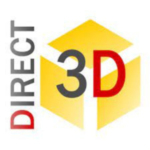
Direct3D
Direct3D is Microsoft’s answer to all the different aspects of the 3D rendering craze. This program is an absolutely free Microsoft add-on that lets you manipulate and work with 3D options, just like the rest of these programs do. It actually has a couple of different features that make it unique compared to the other programs, but to start with, it is a very solid option for design and 3D interior rendering services.
You can create, manipulate, and enhance 3D designs within the program, allowing you to do much of the same work as the other programs and enabling you to have another free option at your disposal for rendering purposes. It is very deft with rendering shapes and complex geometries, but it does have its limitations with textures and skins in comparison to the other products discussed here.
One benefit that it does include, since it is an add-on with Microsoft products, is that it can automatically be used to enhance the graphics in video games as you use them. So, from a consumer point of view, instead of just trying to create new designs and graphics, this will work to boost and improve the graphics that are in place with things you’re already using.
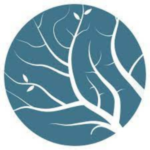
Lumion
Lumion acts as the “finisher” for a lot of different design programs. Let’s be clear about this—Lumion is not a design-builder or architectural program like the rest. You do not use Lumion to craft a building or structure or to generate a product design for your project. Those are done in any of the other programs.
Instead, you take that design and upload it into Lumion so that you can finish it off, taking it from a simple, static product and adding photorealism and artistic renderings to it. By utilizing Lumion, you can incorporate different skins and textures, adding movement and other dynamic aspects to the initial design.
RELATED: The Most Popular Rendering Software Used by Freelance Architects and 3D Design Services
There are several benefits to Lumion since it stands alone as simply a design touch-up or finishing program. There is an increased capacity and focus on the aesthetics and detail of the design, as opposed to simply the geometry or functionality. It allows you to spend more processing power on the actual rendering and artistry of the design and also cuts down the time it takes to produce since it dedicates its processing power strictly to the rendering process.
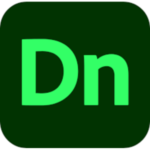
Adobe Dimension
Obviously from Adobe, this product is a challenger to SolidWorks and AutoDesk. Seeing as Adobe is well-known in the design and rendering space with products like Creative Cloud and Photoshop, it is natural for them to be a part of the 3D design and rendering space as well. This product is essentially a direct competitor to AutoDesk’s suite of products, offering another option for 3D design, and even all the way up to photorealistic rendering.
Adobe Dimension is at the other end of the spectrum from AutoDesk though. Autodesk and its various children are all very robust and powerful, but difficult to use. Adobe Dimension strips down some of the power and capability and instead focuses on ease of use and creating an experience and user-friendly option that even novices can feel comfortable jumping right into.
This product has many of the same functions but is a very pared-down version of Maya and the other programs in order to make it very straightforward. Their major selling point is that it is an out-of-the-box solution for people who don’t have a lot of experience with rendering. Because it is an Adobe product, the user controls will be familiar to those who have used Creative Suite or Photoshop.

Thea Render
Thea Render is a newer entry into the world of 3D rendering and design and it emulates the likes of AutoDesk and Adobe Dimension. It has positioned itself as a standalone solution, with a suite that builds off the initial functionality. Oftentimes called a “sandbox,” it is a program that is central to the design process, and other plug-ins are necessary to ensure that you can get a complete product that looks realistic. It works as the base, and you can use other Thea programs to finish out renderings, architectural drawings, or 3D printable pieces.
While it is a powerful system, it does have its own issues, particularly because it is newer and less evolved than the bigger name programs. It is noticeably slower at times, especially with more complex renderings. This can make it difficult to use when working on a time constraint. Additionally, it is not extremely user-friendly. There is some difficulty that comes with learning it, especially when incorporating different add-ons to complete your project. It is a lower price point, making it attractive for people who don’t want to purchase Maya or Revit, but it comes with some drawbacks.
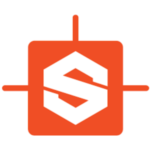
Substance Designer
Substance Designer is a unique construct different from the other options we’ve mentioned. While most of these products focus strictly on designing something in the 3D space and then rendering it with photorealistic qualities, or adjusting it to make it an architectural piece or 3D printed product, Substance Designer stands alone in contrast. Its name belies its true nature – it is used to create substances. This program works with the other ones fairly well because it is not a true competitor to any of them. It informs them and helps them work even better because Substance Designer is used to create textures, patterns, and materials.
As the name implies, Substance Designer is used to manufacture new materials and substances to use in 3D renderings. For example, if your software suite doesn’t have an acceptable version of wool for your product design, or can’t accurately emulate the alien feathers for your photorealistic rendering of martians, you can use Substance Designer to manufacture it for you. While this may seem like a unique niche, it comes in handy for more complex work and should be considered a staple of the designer’s toolbox once they have gotten to a certain level of mastery.
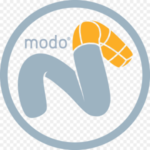
Modo
Modo is another option for a full package solution, but it positions itself as something of a large scale, material flexible SolidWorks. Modo works to build full scale, individual 3D models just like SolidWorks does, but it has a bit more fluidity when it comes to materials, scale, and complexity of products that it creates. It is a dynamic option, but it does have the same limitation that SolidWorks does—it is not a full-environment product. You work strictly with the product in the design—there is no additional photorealism incorporated other than the product’s strict features and material.
It is excellent as a base solution to create a product that will eventually be rendered and put into another environment, but it is unable to create that environment for you and, therefore, won’t allow you to test the design to see how well it fits into the environment. This is the same limitation as SolidWorks, so it should be no surprise. Created as a newer and more dynamic option to SolidWorks, it does struggle with ease of access because of the additional functionality. Expect to take some time learning how to use Modo properly.
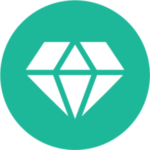
Artlantis
Artlantis is the architect’s best friend when it comes to realistic renderings and designs. This program was designed by architects and for architects, although it is still quite useful for product design and other options. The intent of this program was to create a quick and easy-to-use solution to create product mockups and displays, particularly for the world of construction, real estate, and the like. These designs don’t necessarily need to be the most intricately detailed drawings like some video games have become, and they don’t need all the fancy animation.
For example, ray tracing is entirely unnecessary because buildings and products don’t move much. Artlantis is designed as an out-of-the-box solution to give a quick rendering for those who don’t need to know much about the process. For this reason, it is very straightforward and easy to use, especially if you have experience with architectural design services and product design programs.
The common-sense approach makes it a go-to choice for many designers and allows them to create something quickly and simply without having to learn an entirely new process. Artlantis is a must for architects or designers looking to create a mockup or product display quickly and without too much fuss.
Cad Crowd Has Expert Designers for Every Program
Depending on what you plan to create, your software needs will vary. Thankfully, there are so many options you will always be able to find something to suit your needs. If you are a freelance 3D design service, you can use this list to build up your repertoire of necessary skills and software packages. If you are looking to hire one, this list will help guide you to an understanding of what the best skills for your project are, and what programs are necessary to get it completed properly.
Cad Crowd offers designers with experience in every area so you can complete your project. These programs will allow you to take an idea and craft a beautiful rendering or design from the ground up—no matter what industry you’re working with or what type of product you’re creating. Rendering and design are intricate processes, but these packages hold everything you need to get a project started and all the way to the market. Get a free quote today and find the right designers with the necessary skills, so you don’t have to worry about your project until sales start rolling in.
